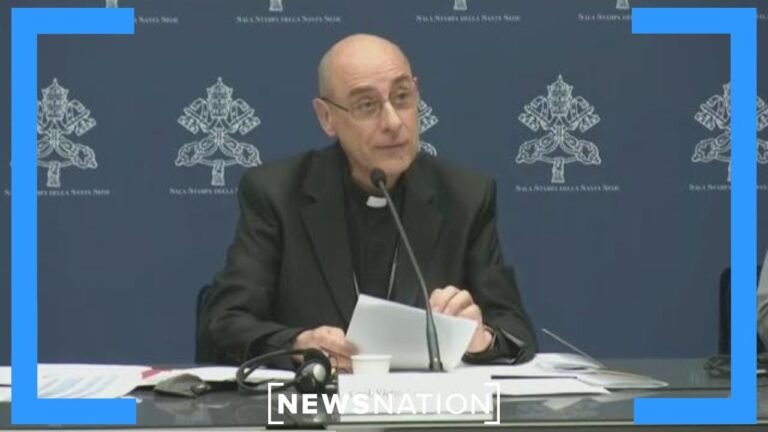Understanding the Timing of the Feast of Trumpets
The Feast of Trumpets, a significant event in the Jewish calendar, marks the beginning of the High Holy Days and serves as a time of reflection and renewal. This year, the celebration falls on the evening of September 15 and continues into September 17, inviting communities to gather for prayer and introspection. As the sound of the shofar fills the air, it heralds a season of spiritual awakening, calling individuals to examine their lives and seek forgiveness. Explore the rich traditions and meanings behind this ancient festival and discover its relevance in today’s world.
When does the Feast of Trumpets occur?
The Feast of Trumpets occurs on the first day of the Hebrew month of Tishrei, usually in September or October.
- The Feast of Trumpets, also known as Rosh Hashanah, is celebrated on the first day of the Hebrew month of Tishrei.
- In 2023, the Feast of Trumpets begins at sundown on September 15 and ends at nightfall on September 17.
- This Jewish holiday marks the beginning of the High Holy Days and is a time of reflection, repentance, and renewal.
- The blowing of the shofar, a ram’s horn, is a central ritual during the Feast of Trumpets, symbolizing a call to repentance and awakening.
When is the feast of trumpets celebrated?
The Feast of Trumpets, celebrated on Tishri 1, marks the beginning of the seventh month in the Hebrew calendar. This significant event is a time of reflection and renewal, heralding the arrival of the Jewish New Year, known as Rosh Hashanah. Traditionally, it is observed with the blowing of the shofar, symbolizing a call to repentance and spiritual awakening.
As Rosh Hashanah, the Feast of Trumpets invites individuals to assess their past actions and set intentions for the year ahead. Families gather for festive meals, sharing symbolic foods that represent hopes for a sweet new year. This joyous occasion not only emphasizes the importance of community and family but also serves as a reminder of the deep spiritual heritage within Jewish culture.
Is Rosh Hashanah identical to the Feast of Trumpets?
Rosh Hashanah, commonly known as the Feast of Trumpets, marks the Jewish New Year and serves as a significant time for reflection and renewal. The Hebrew term “Rosh Hashanah” translates to “head of the year,” symbolizing a fresh start and the opportunity to set intentions for the year ahead. Traditionally, this holiday is celebrated with the blowing of the shofar, a ram’s horn, which calls the faithful to introspection and repentance.
While Rosh Hashanah is widely recognized by its contemporary name, it originally held the title of the Day of Remembrance. This highlights its deeper significance as a time when God remembers His promises and the covenant with His people. The day encourages individuals to remember their own actions and commitments, fostering a sense of accountability as they enter the new year.
The themes of renewal and divine remembrance intertwine during Rosh Hashanah, making it a profound occasion for personal and communal reflection. As families gather to celebrate with festive meals and prayers, they embrace the spirit of hope and renewal that this special day embodies, paving the way for a year filled with blessings and growth.
What is the significance of the Feast of Trumpets?
The Feast of Trumpets, or Yom Teruah, marks a significant moment in the biblical calendar as a time for reflection and repentance. While often associated with the New Year, its true essence lies in the divine command to blow the shofars, or ram’s horns, which serve as a powerful reminder of the need for spiritual renewal. This sacred day encourages individuals to pause, reflect on their actions, and recommit to a path of righteousness, making it a profound observance in the Jewish tradition.
Unlocking the Significance of the Feast Day
Feast days hold a profound significance in various cultures and religions around the world, serving as a time for reflection, celebration, and community bonding. These special occasions often commemorate historical events, honor saints, or mark seasonal changes, allowing individuals to connect with their heritage and beliefs. By participating in rituals, prayers, and festivities, people reinforce their values and traditions, creating a sense of continuity and belonging.
The communal aspect of feast days fosters unity among families and friends, as gatherings often include shared meals, music, and dance. These celebrations are not merely about individual observance; they create a vibrant tapestry of collective memory and experience. As participants come together, they share stories and rituals that enrich their understanding of their cultural identity, allowing younger generations to inherit and appreciate their history.
Furthermore, feast days can serve as a catalyst for social change and generosity, inspiring acts of charity and kindness within communities. Many traditions emphasize giving back to those in need during these times, reinforcing the idea that celebration should extend beyond personal joy. This spirit of altruism not only strengthens community ties but also highlights the enduring importance of compassion and connection in our daily lives.
A Deep Dive into the Festival’s History
The festival’s origins can be traced back to ancient traditions, where communities gathered to celebrate the changing seasons and honor their harvests. Over the centuries, these local customs evolved into a vibrant celebration, drawing larger crowds and incorporating various artistic expressions. What began as a simple gathering has transformed into a significant cultural event, rich with history and tradition, capturing the essence of the community it represents.
As time progressed, the festival became a melting pot of diverse influences, attracting artists, musicians, and performers from around the world. This eclectic mix not only enriched the festival’s offerings but also fostered a sense of unity among attendees. Each year, the event showcases unique performances, culinary delights, and workshops that reflect both local heritage and global cultures, ensuring that every visitor leaves with a deeper appreciation for the artistry and collaboration that defines the festival.
Today, the festival stands as a testament to the enduring power of community and creativity. It serves as a platform for emerging talent while also honoring the legacy of those who paved the way. As it continues to grow and adapt, the festival remains committed to preserving its historical roots, making it a cherished event that celebrates both the past and the future. Each iteration not only pays homage to its rich history but also invites future generations to participate in this ever-evolving cultural tapestry.
The Spiritual Meaning Behind the Timing
Timing is often regarded as a mere sequence of events, but it holds profound spiritual significance that can guide our lives in meaningful ways. Every moment presents an opportunity for growth, reflection, and connection, urging us to recognize the divine orchestration at play. When we pay attention to the rhythm of our experiences, we can uncover valuable lessons hidden within life’s ebb and flow. Embracing the idea that timing is not just a clock ticking away, but a sacred dance of synchronicity, allows us to align our actions with a greater purpose, fostering a deeper understanding of ourselves and the universe around us. By trusting in the timing of our journeys, we open ourselves to the transformative power of patience, faith, and the beauty of unfolding possibilities.
Traditions and Celebrations Explained
Across cultures, traditions and celebrations serve as vibrant expressions of shared values, history, and identity. From the colorful festivities of Diwali illuminating homes with hope to the solemnity of Hanukkah commemorating resilience, each event offers a unique glimpse into the beliefs and practices that bind communities together. These occasions not only foster a sense of belonging but also provide opportunities for generations to pass down stories, rituals, and customs, ensuring that the essence of each culture is preserved and celebrated. Whether through feasting, dancing, or storytelling, traditions enrich our lives, reminding us of our roots while inviting us to embrace diversity in our global community.
Preparing for the Feast: A Guide to Observance
As the season of celebration approaches, it becomes essential to prepare both mind and spirit for the festivities ahead. Embracing the traditions associated with the feast not only deepens our connection to our heritage but also enriches the communal experience. Start by gathering family and friends for meaningful discussions about the significance of the feast, sharing stories that highlight its importance. This collective reflection fosters a sense of unity and anticipation, setting the stage for a truly memorable occasion.
In addition to spiritual preparation, practical steps can enhance the overall experience. Create a checklist of necessary items, from ingredients for traditional dishes to decorations that embody the spirit of the celebration. Involve everyone in the preparation process, encouraging contributions that reflect individual traditions and tastes. By blending diverse elements, you create a feast that honors the past while embracing the present, ensuring that the gathering is not only a meal but also a heartfelt celebration of togetherness and gratitude.
The Feast of Trumpets, a significant event in the Jewish calendar, marks the beginning of the High Holy Days and serves as a time for reflection, renewal, and preparation for the Days of Awe. Observed on the first day of Tishrei, it invites individuals to engage in self-examination and spiritual awakening. As this vibrant celebration approaches, it reminds us of the importance of community, tradition, and the call to introspection, making it a meaningful occasion for people of all backgrounds to embrace its rich heritage and significance.







